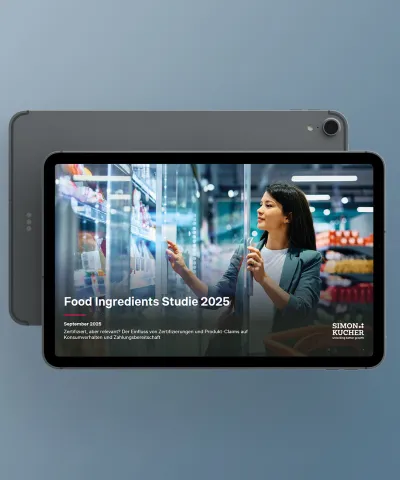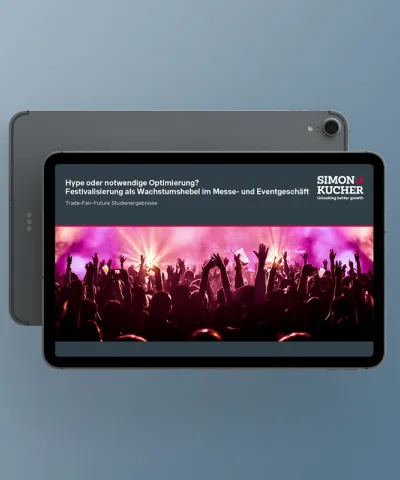Ever launched a brilliant RGM strategy, only to watch it stumble in technical execution? You're not alone. Many companies see revenue growth grind to a halt when fragmented systems and overlooked integrations turn grand plans into a tangled mess.
The biggest pitfall: Treating strategy as thought work and technology as execution work, when in reality, they’re completely intertwined.
RGM is, at its core, a data-driven optimization engine. It’s about continuous, often incremental, improvements on key commercial KPIs: pricing, promotion efficiency, revenue per unit, margin uplift, and more. That kind of precision work demands an IT architecture that can process data, generate insights, and enable action at scale.
Without a compelling value proposition or holistic, end-to-end approach, customizations become pitfalls and multi-year contracts, constraints. This article provides a roadmap to bridge that gap, transforming RGM technology from a source of frustration to a driver of competitive advantage.
RGM tech challenges
- Lack of long-term vision
Many underestimate the role of technology in revenue growth management, viewing it as a golden bullet rather than a foundational enabler. But beyond choosing software, you need to understand how the entire commercial ecosystem will evolve over time. If your tech can't scale with the business or support new capabilities as they emerge, you’ll constantly be playing catch-up. Even the best strategies mean nothing if data is fragmented, systems don’t talk to each other, or teams don’t have access to the right insights at the right time.
- Fragmented strategy & misalignment between technology, business, and processes
Who has ownership of your IT architecture’s big picture? Is every commercial stream (pricing, promotions, trade terms, etc.) making decisions in isolation? If that’s the case, instead of having a streamlined, scalable system, you end up with a patchwork of solutions that don’t communicate properly, leading to inefficiencies, inconsistencies, silos, and unnecessary costs.
- Rushing into tech decisions before fully mapping out the end-to-end RGM process
If you don’t fully understand what you need, you can’t ask the right questions or pressure-test a vendor’s capabilities. This makes it far too easy for vendors to say, “Sure, we can do that” without real alignment. Remember: software follows function. The more clearly you define your current and future requirements, the better you can evaluate whether a vendor’s offering is a true fit, or just a surface-level promise. Choose the wrong vendor, and you’re locked into a bad fit for years.
- Data is messy, siloed, inconsistent, or outdated
Trying to implement advanced RGM strategies with messy, siloed, inconsistent, or outdated data is like building on shaky ground. Without a clean, reliable source of truth for your products, customers, and sales, even the most sophisticated AI-driven pricing model can deliver unreliable results. You might have invested in cutting-edge technology, designed to optimize your revenue with precision, but if it's operating on flawed data, the outcomes will be flawed as well.
In RGM, clean data is essential; it's the foundation upon which effective strategies are built. Without it, your tech investments may not achieve their full potential, hindering your revenue growth efforts.
- Every region, business unit, or function starts optimizing locally without thinking about the global architecture
Beyond alignment, consider the existing tech sophistication within each region or business unit. What happens when a local market is already using a more advanced solution than what the central system will offer in the future? This requires a thoughtful transition plan: do you replace the local solution, integrate it, or let it continue operating in parallel? Ignoring disparities leads to resistance, loss of capabilities, or fragmentation down the line.
- Teams not bought into using the tool
Often, the problem isn’t the tech itself but the change management around it. If people aren’t trained properly or don’t see the value in using the solution, they might resist, leading to poor adoption, manual workarounds, and ultimately, failure.
How to develop an end-to-end RGM tech strategy
Make sure your software follows strategy
Before jumping into technology decisions, you need a clear mapping of business and functional requirements. This ensures the system is designed around what your business needs, rather than forcing a tool onto business units and figuring out how to make it work. Distinguishing between business and technical requirements is crucial.
Business requirements focus on why (what outcomes do we need to achieve?), e.g.,
- I need to offer a promotion on top of a customer’s standard discount.
- I need to ensure contractually agreed terms are enforced.
- I need visibility on the incremental revenue generated per promotion.
Technical requirements are the how (what specific capabilities does the system need to support these business needs?), e.g.,
- A visual aid to highlight low-margin products.
- An automated approval workflow for promotions above a certain threshold.
- Calculations to apply stacked discounts correctly.
Outline your long-term vision
Use the implementation of RGM tech as an opportunity – not just to solve today’s problems, but to redefine and harmonize processes and ways of working across the organization. This is a chance to reset how teams operate, align on best practices, and build consistency at scale.
Here, it’s crucial to think in terms of both current and future business needs. What works today might hold you back tomorrow. In addition, not all business needs are created equal. Some, like price management, are relatively straightforward to implement. Others, like real-time pricing across markets and channels, are far more complex, requiring advanced architecture and deep integration. E2E RGM requires a structured, stepwise approach:
- Start with a core functional scope and expand over time (evolution vs. revolution).
- Roll out to select business units first before scaling across the region.
- Validate and adjust as you go, rather than scrambling to fix problems after go-live.
If you only think in one-year cycles, you’ll end up rebuilding your system every year as requirements keep shifting. Instead, you need a 3-to-5-year roadmap:
- Start with core must-haves: The absolute minimum needed to make the system usable and provide some immediate value.
- Iterate & enhance: Introduce additional capabilities based on business impact.
- Future-proof the system: So that as business needs evolve, you don’t have to overhaul everything again.
Think about:
- Business impact: What will drive the most value? What are the current pain points?
- Technical feasibility: What can be built in the short term? What needs a longer runway?
- Change management: How much disruption can the business absorb at each stage?
Too often, companies try to boil the ocean, attempting to replace their full core ERP system while simultaneously launching several interdependent tools – a recipe for overwhelm and failure. No business can shut down for months to transition systems. Don’t try to do everything at once, or you’ll face a situation where:
- You launch something half-baked (impossible to test everything before go-live).
- You’re back-fixing constantly because real-world scenarios break things you didn’t anticipate.
- You burn through insane amounts of money, not just on implementation, but on crisis management and firefighting post-go-live.
A smarter approach is to slice the elephant: start with a clear roadmap and solid foundation, get immediate wins, and scale based on proven success. You get value faster without operational disruption. It’s a smarter, faster, lower-risk way to get to the same goal.
- Lower risk: Less likelihood of post-go-live chaos and costly emergency fixes.
- Faster time-to-value: Don’t have to wait for perfection to start seeing benefits.
- Easier adoption: People get time to adjust to the new system.
You might think “Big Bang = faster” but in reality, Big Bang = more delays, more costs, and more headaches. Phasing properly means reaching full rollout sooner than if you try to do it all at once.
Define and assign a central authority
Balancing bottom-up business requirements and top-down authority is essential. If requirements are imposed from the top without local input, they’ll be disconnected from reality and won’t be adopted. But if every business unit gets to dictate its own requirements without central oversight, you end up with fragmentation and inconsistency. This is exactly the problem you’re trying to solve.
When multiple stakeholders are involved, there needs to be a clear framework for making trade-offs. Otherwise, prioritization can become a political battleground. Think about the complexity of contractual obligations in pricing and promotions. A rigid approach would completely fail because you can’t unilaterally change the terms of customer agreements.
As conflicting needs arise, there must be someone with the authority to say, “This is the direction we’re going in,” while ensuring the decision isn’t arbitrary but rather based on an informed analysis of trade-offs. Business requirements come from the ground up, with the central authority acting as the strategic filter, making informed decisions and setting clear priorities. This ensures that:
- Decisions align with overall business goals, not just what’s optimal for one business unit in isolation.
- There’s consistency where it matters, so data can still be compared and shared across units.
- Exceptions are managed in a controlled way, so unique local needs don’t derail the entire system.
One of the biggest risks is losing context between different phases, where requirements gathering, vendor selection, and implementation happen in silos. That’s when you get people saying, "Oh, this requirement was just one of 500, we didn’t think it was important," only to realize that it was critical to making the system work.
That’s why the central authority needs to be consistent across all phases: from business requirements to vendor selection to implementation. If there’s a complete disconnect between those who define the requirements and those who select or implement the technology, decisions will be made without full context, leading to costly misalignment. This also requires strong documentation and traceability in the process:
- Why was a particular requirement included or excluded?
- What were the trade-offs considered?
- How does each requirement link to actual business needs?
If these discussions aren’t properly tracked, there’s a real risk that critical insights from early discussions get lost as things move forward.
Bringing in external experts can depoliticize the process, as business units may be more willing to provide honest input to an external party than to HQ. Plus, if certain trade-offs need to be made, they can act as a neutral party to justify those decisions, rather than making it look like HQ is simply disregarding local needs. The key, though, is ensuring continuity. If one team gathers all the requirements, another team selects the vendor, and a completely different team implements the solution, then context gets lost at every handoff. That’s when you get business users saying, “This tool doesn’t really fit our needs,” and the implementation team saying, “Well, it’s too late now.”
Gain buy-in through change management
Some business units might resist change because they believe their way of working is better. This is where you need strong executive buy-in to push standardization.
Adoption comes down to two things:
- Demonstrating this is not just for central governance but also for the business units’ own benefit (higher revenue, better automation, fewer manual processes).
- Reducing the perceived pain of transition (lowering the learning curve, ensuring they don’t lose existing functionality, and providing strong local support).
People naturally resist change, especially when they feel like decisions are being made over their heads. The more transparent and structured this process is, the better the adoption will be. If local teams understand why decisions are made and how their input shapes the outcome, they’ll be more likely to engage positively rather than push back.
From a central governance perspective, the benefits are clear: standardized data, easier comparisons, centralized steering, better compliance, etc. But for someone sitting in a business unit, the immediate reaction is probably along the lines of: We know our customers. You want us to learn a whole new system so HQ can have cleaner reports?
Business units need to want to change rather than just tolerate it because headquarters says so. So, instead of presenting this as an imposed standardization exercise, reframe it as a journey toward higher-level capabilities. It’s not just a change, but a step on a continuous improvement journey.
The key is making that future vision tangible. Business units won’t get excited about abstract benefits like “structured data” or “centralized governance.” But if you can show that this transformation will enable better automation, more intelligent recommendations, and ultimately higher margins, then it becomes something worth investing in.
It’s also important to recognize the pain points of transition and proactively address them. No matter how good the new system is, if switching feels like a bureaucratic nightmare, people will resist it.
Select the right vendors
A lot of vendor selections focus too much on feature checklists and slick presentations. But the real test is: Can this tool handle our specific business cases? Instead of watching a polished sales pitch, flip the script: “Here’s a typical business situation. Show us exactly how your tool would handle this process from end to end.” That forces vendors to prove their system works, rather than just saying, “Yes, we support that.”
But even after validation, you can still run into surprises during implementation. Pricing and promotion tools often look great in a controlled demo, but when you try to configure them with real-world data, things can break down:
- Features that seemed straightforward turn out to have hidden limitations.
- Integrations supposed to be “plug-and-play” require custom development.
- Performance suffers once data volumes increase or edge cases arise.
You need more than just demos and contracts. A well-run selection process includes:
- Prioritizing business and technical requirements. No vendor will check every box, so you need to know where you’re willing to make trade-offs, and where you’re not.
- Looking at real-life examples of how vendors have performed with similar companies or use cases (external partners can help bring this insight.)
- Stress-testing data integration capabilities. RGM tech doesn’t live in a vacuum, it has to interact seamlessly with your broader data and system landscape.
- Watching for red flags. If a vendor says yes to everything without hesitation, take that as a sign to dig deeper.
Choosing the right partner isn’t just about today’s features. It’s about long-term fit, adaptability, and trust. If you don’t test how a system really performs in practice, you risk discovering its flaws only after you’re locked in.
End-to-end RGM with Simon-Kucher
Unified RGM vision & strategic alignment: Scalable RGM execution that aligns every commercial function, creating a unified growth engine.
End-to-end technology roadmap: Future-proof system that seamlessly integrates with your existing landscape, including ERP, supply chain, and sales platforms.
Clear system requirements & vendor selection: Precise business and technical system requirements, creating a clear roadmap for vendor evaluation.
Strategic system architecture & future-proofing: Target architecture that anticipates your future needs, mapping out data flows and eliminating costly software duplication.
One-stop, integrated approach: Synchronized strategy, tech, and data solution, ensuring your software follows your RGM function, not the other way around.
Curious how your current RGM tech stacks up? Schedule an assessment with our experts to identify opportunities for optimization.








